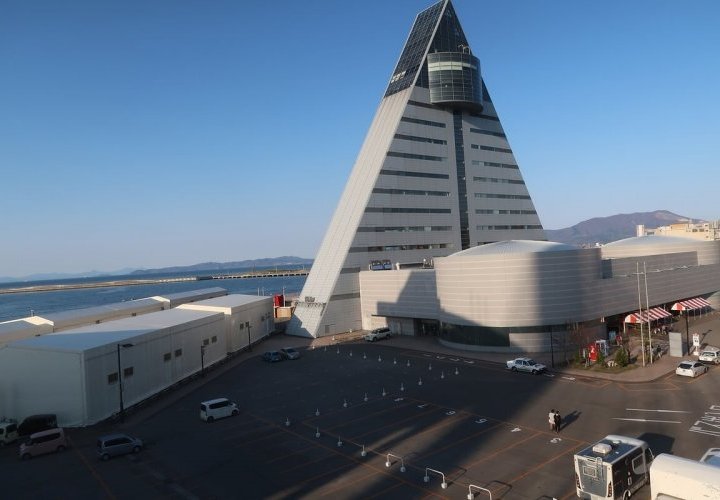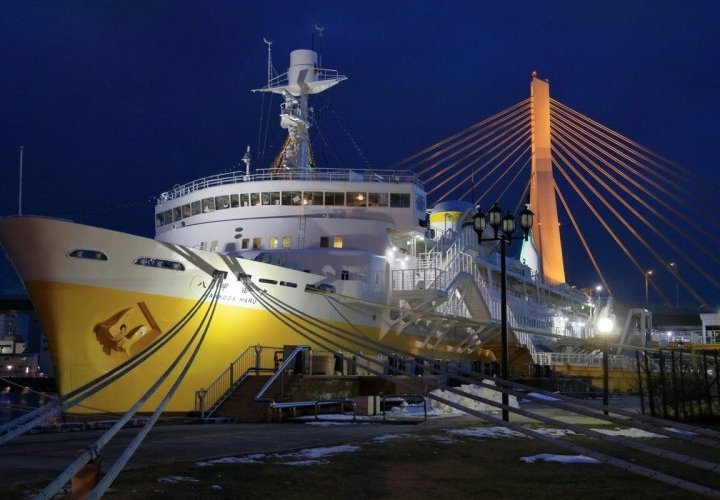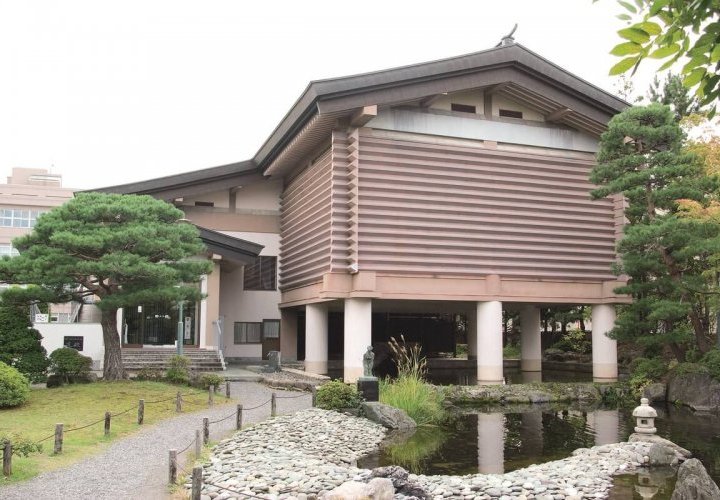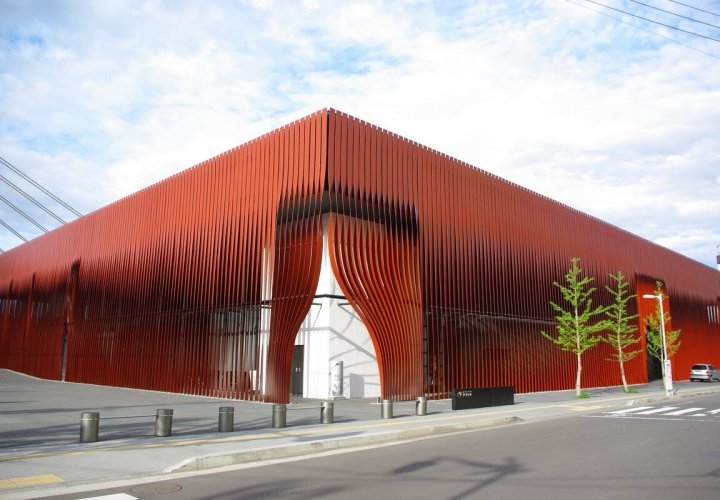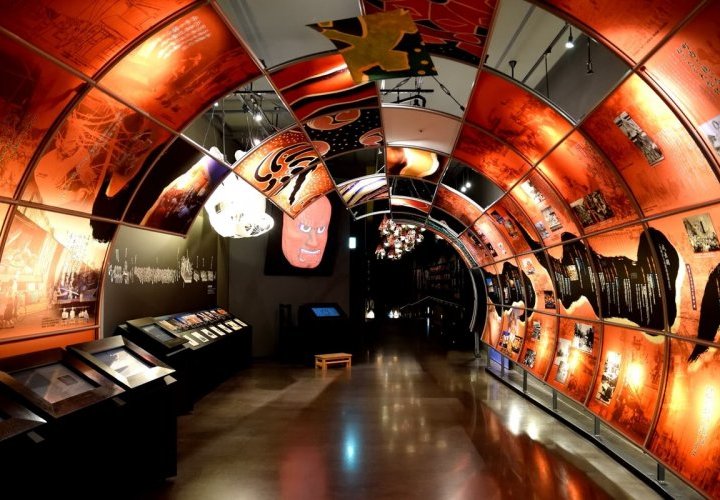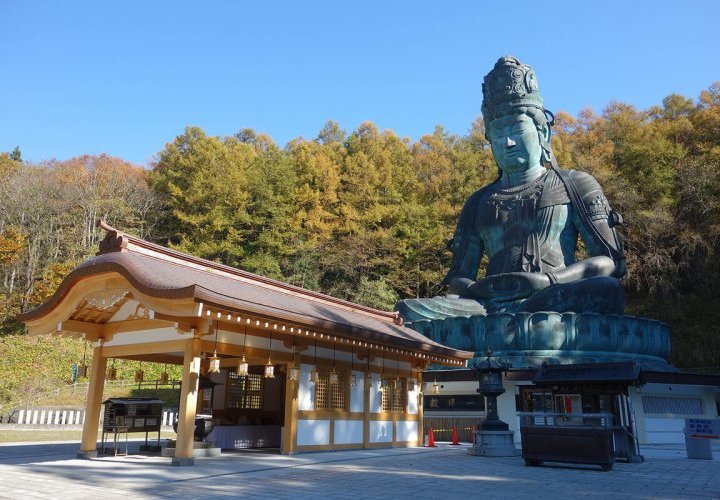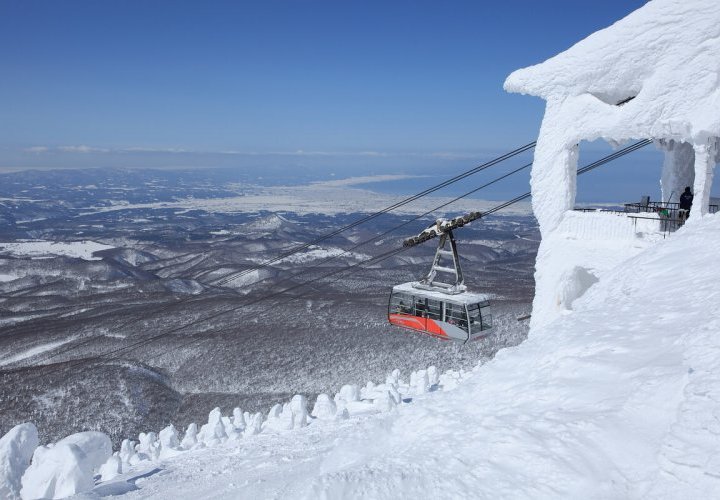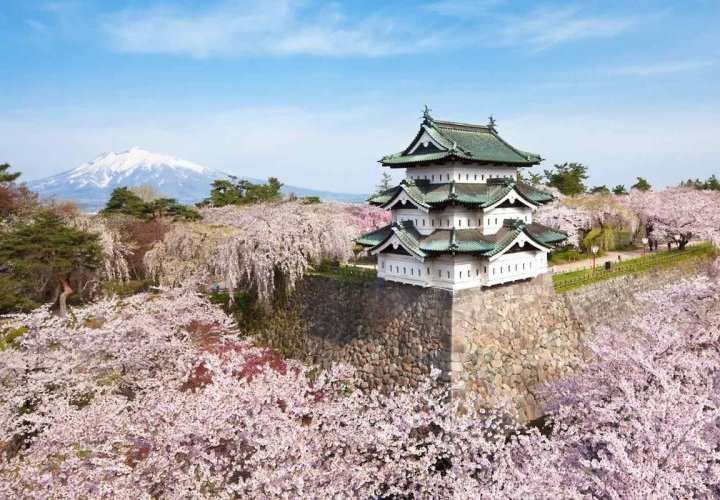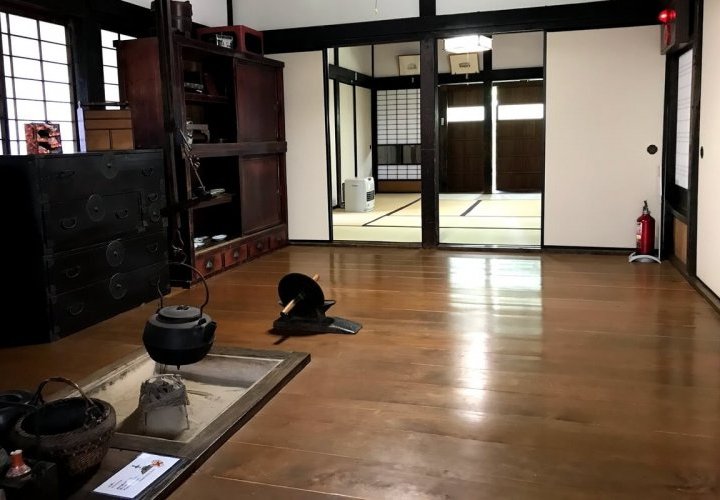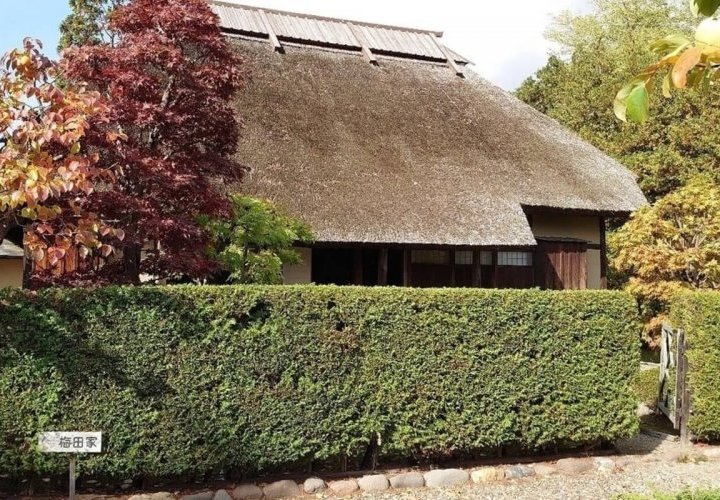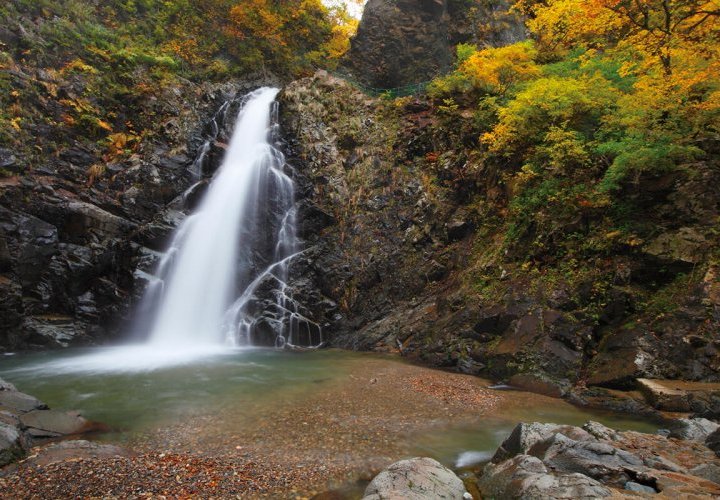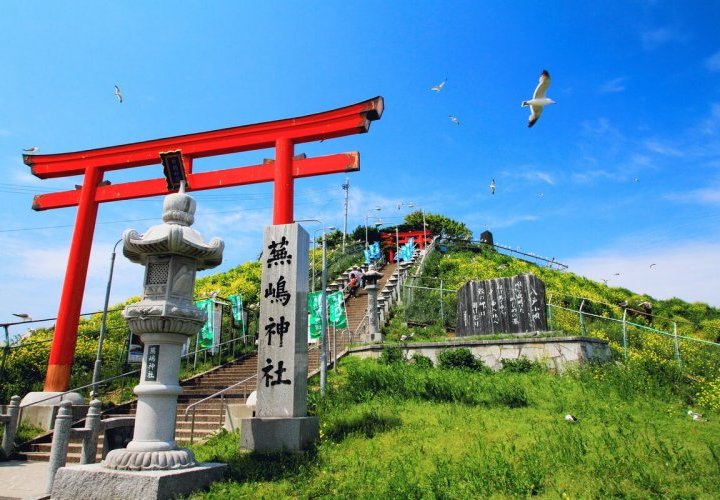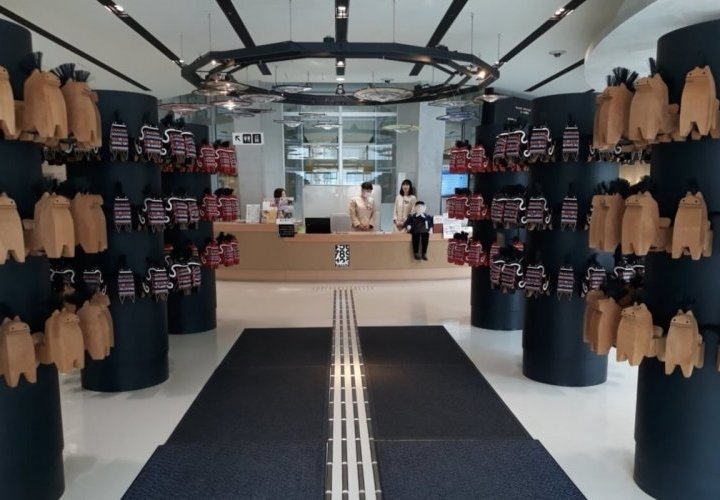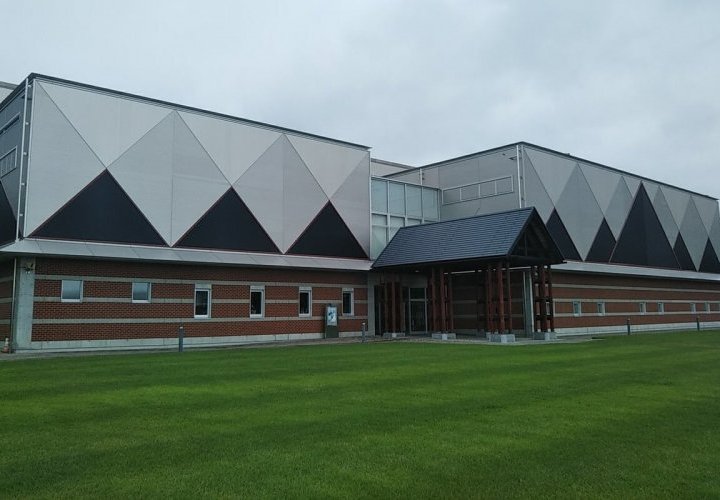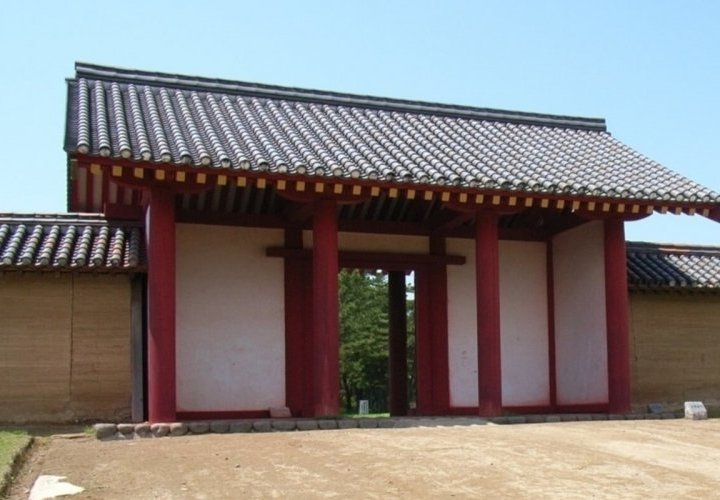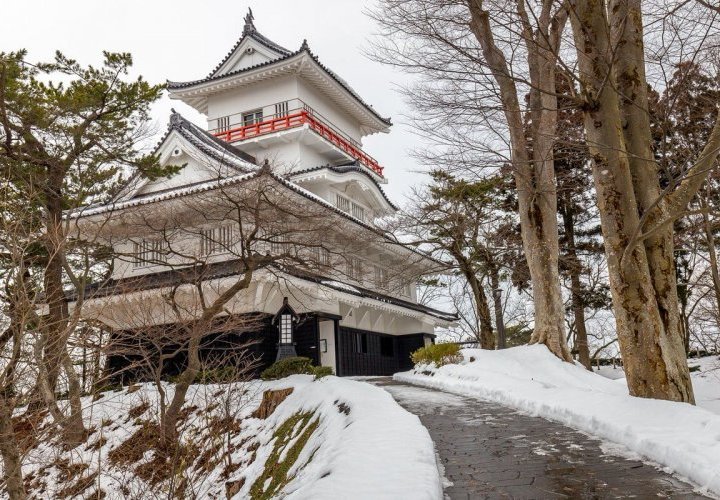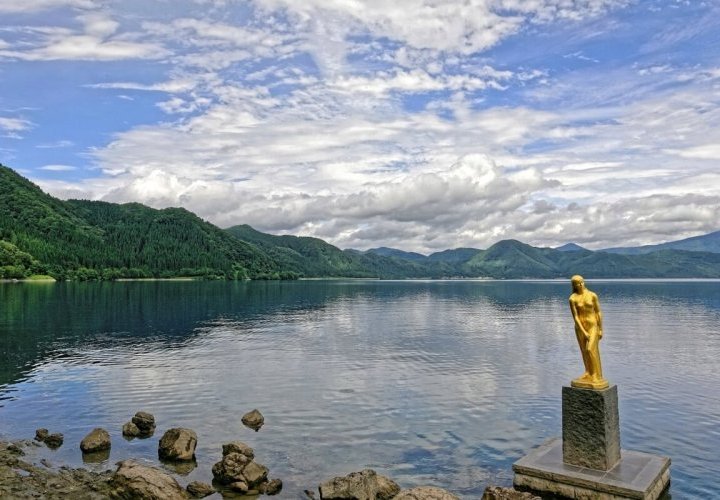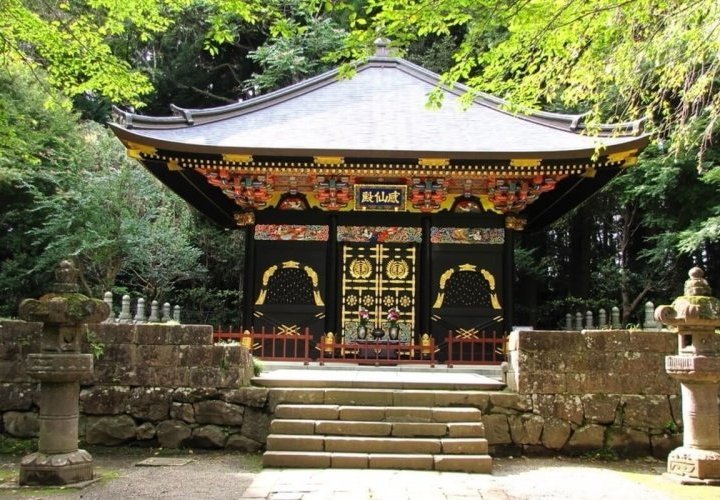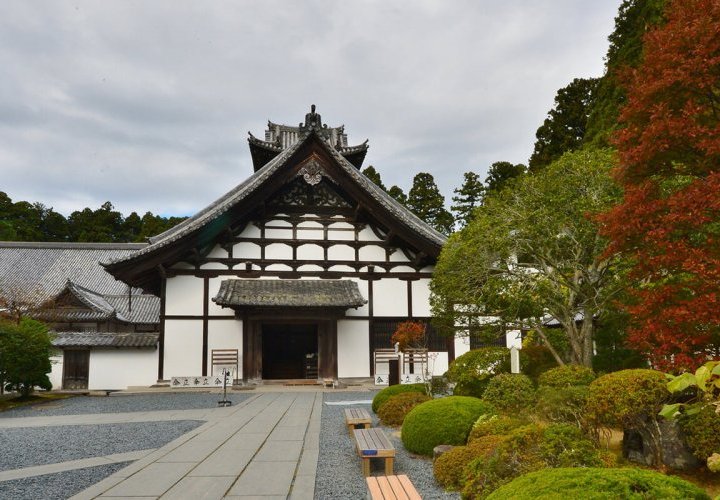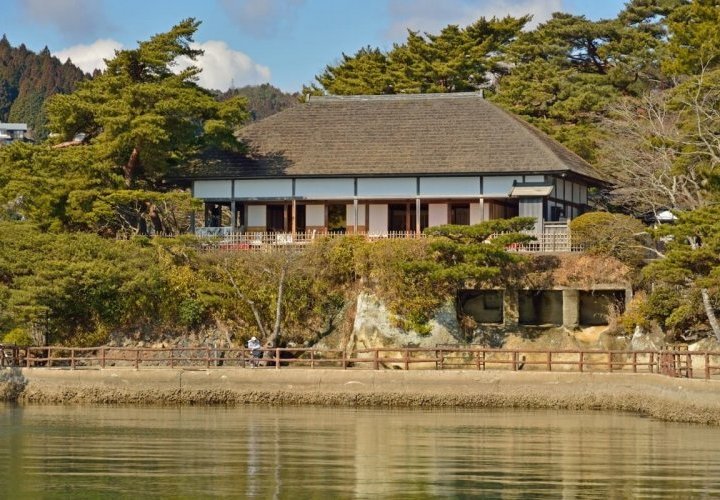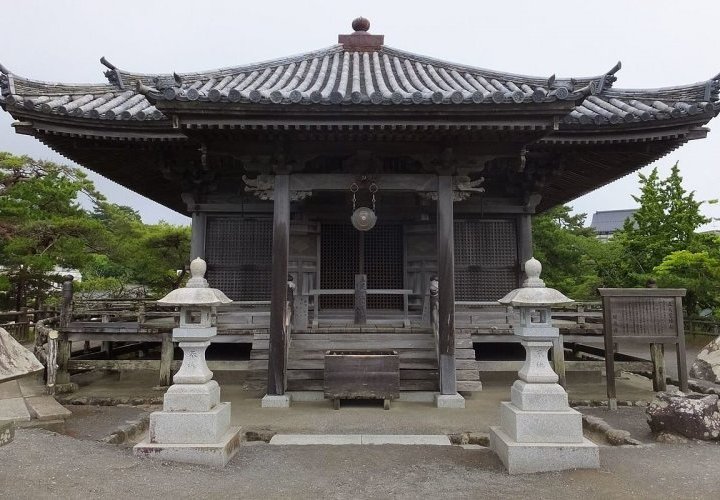Tohoku region is the most remote of the five regions being located in the north of Japan’s largest island, Honshu. It consists of six prefectures (ken): Akita, Aomori, Fukushima, Iwate, Miyagi, and Yamagata and is known for skiing and onsen (hot spring baths), as well as for its countryside, mountains, lakes, historic sites, high quality rice, craft sake and harsh winters.
Tohoku, like most of Japan, is hilly or mountainous and includes Shirakami-Sanchi, a UNESCO World Heritage Site located on the boundary between Aomori Prefecture and Akita Prefecture. This mountainous area has a magnificent scenery and comprises the last virgin forest of Siebold’s beech that once covered most of northern Japan.
Tohoku provided 20 percent of the nation’s rice crop, but because of the cold climate, more
Tohoku, like most of Japan, is hilly or mountainous and includes Shirakami-Sanchi, a UNESCO World Heritage Site located on the boundary between Aomori Prefecture and Akita Prefecture. This mountainous area has a magnificent scenery and comprises the last virgin forest of Siebold’s beech that once covered most of northern Japan.
Tohoku provided 20 percent of the nation’s rice crop, but because of the cold climate, more
only one crop per year is possible. However, the Pacific coast of Tohoku is generally less snowy than the region’s popular image and has among the smallest seasonal temperature variation in Japan. Many outdoor activities are possible in Tohoku such as rafting, hiking and skiing.
Aomori city is located on a plain at the southern end of Aomori Bay in central Aomori Prefecture and is the northernmost prefectural capital city in Honshu. The total area of the city is 824.61 km2 and as of April 2020, it had an estimated population of 278,964 inhabitants. Two large rivers flow through the city: Komagome River and its tributary, the Arakawa River.
The Port of Aomori used to be the main departure point to Hokkaido by ferry that served as the main transport between the two islands from 1908 to 1988. However, the opening Seikan Undersea Railway Tunnel in 1988 and the advent of cheap flights, replaced the slow-moving ferry (around 4 hours from Aomori to Hakodate) as the main transportation for passengers.
Aomori Prefecture has both diverse culture and magnificent nature, including Shirakami Sanchi designated a UNESCO World Heritage Site. It is also known for such attractions as the Jomon Period archaeological site, Sannai Maruyama and Hirosaki Park that offers famous cherry blossom views, and other beautiful natural areas such as Lake Towada, the Hakkoda Mountains, and the Hotokegaura - a series of rock formations along the sea cliffs on the west coast of the Shimokita Peninsula.
TOURIST ATTRACTIONS IN AOMORI
Aomori Prefecture Tourist Centre
Aomori Prefecture Tourist Centre is a skyscraper in Aomori, whose construction was finished in 1986. The skyscraper is 76 m high, has 15 stories and offers a 360-degree panoramic projection. From the observation deck, you can enjoy not only the view of the city, but also see the Shimokita, Tsugaru and Natsudomari Peninsulas, as well as Mutsu Bay and the Hakkoda Mountains.
Hakkodamaru Memorial Ship
Hakkodamaru is a memorial ship that presents the history of the Seikan ferry, which ended its service in 1988. After completing its final voyage, Hakkodamaru retired to Aomori Port where it remains permanently docked as a museum ship. Much of the Hakkodamaru is open to the public, and the visitors can enter the bridge, explore the open top deck and take a look at its preserved cabins, engine room, gangplank used during its service years. A unique feature of the Hakkodamaru was the fact that it could hold up to 48 rail cars on four separate tracks.
Aomori Museum of Art
Aomori Museum of Art is a modern art museum located near Sannai Maruyama site just outside of downtown of Aomori city. It opened in July 2006 and houses more than 120 works including three large paintings by Marc Chagall, woodblock prints and paintings by Shiko Munakata, pop art and almost cartoonish work of Yoshitomo Nara. The huge 8.5-metre tall Aomori-Ken Dog statue by Yoshitomo Nara has become the symbol of the museum.
Shiko Munakata Memorial Museum of Art
The museum located in Aomori opened in 1975 and houses many works of Shiko Munakata, a woodblock printmaker who was born in Aomori city.
Nebuta Warasse Museum
Nebuta Warasse is an interesting museum that exhibits the history of Aomori Nebuta Festival that is held annually in early August. The museum offers you a dreamy space where you can experience the festival’s lively atmosphere, history and traditions throughout the year. There is a red corridor lined with photos and images from the 300-year festival’s history, as well as lanterns in the shape of red goldfish, and even full-size floats from Aomori Nebuta Festival.
Showa Daibutsu at Seiryuji Temple
Located in the suburb of Aomori city, the temple was founded by a Great Acharya Ryukou Oda. On the premises, there is a 39 m high pagoda, which is Japan’s fourth-highest five-story pagoda. It is totally made of Aomori Hiba and Kondo cypress. The temple is home to Showa Daibutsu, the tallest seated bronze statue of Buddha in Japan reaching 21.35 metres in height.
Sannai Maruyama Site
Sannai Maruyama Archaeological Site in Aomori is the largest and one of the most complete and best-preserved Jomon Period (13,000 - 300 BC) villages in Japan. The former Sannai Maruyama Village was inhabited by hunter-gatherers around 3,900 BC – 2,900 BC and once included over 700 structures and dwellings including pit houses, long houses, storage structures, roads, etc. One of the most famous structures is the large six-pillared building that was built around 2,600 BC and is believed to have been a monument or a watchtower.
Moya Hills Ski Resort
Moya Hills Ski Resort is located in the south of Aomori city (approx. 30 min. by car from Aomori Airport), being the closest one to central Aomori and the most visited of the city. It has different slopes adapted to the level of skiers, one quad lift, two pair lifts and two short rope tows.
Hakkoda Ski Resort
Hakkoda Ski Resort located in Aomori city (approx. 1 hour by car from Aomori Airport) is visited by many people who enjoy skiing or snowboarding in the Hakkoda Mountains in winter. It offers long dynamic slopes with natural elements such as trees glazed with ice and is known as a place for visitors looking for a challenging snow adventure.
Aomori Prefectural Skating Rink
The indoor skating arena offers ice-based sports and recreational activities all year round being used both for ice-skating and for ice hockey in winter and as Japan’s largest indoor inline skating rink in summer.
SIDE TRIPS FROM AOMORI
Aomori Spring Ski Resort
Aomori Spring is one of Tohoku’s premier ski resorts being located on the northern tip of Honshu Island in Ajigasawa town (approx. 1 hour 10 min. by car from Aomori Airport). The ski resort offers natural powder snow and a long slope, while as a relaxing treatment after skiing, you can enjoy a hot spring bath.
Owani Hot Spring and Ski Resort
Located in a hot spring resort in the south of Owani town, this ski resort is the largest in the prefecture and it takes approx. 1 hour 20 min. to get to it from Aomori Airport. It has a gentle and wide slope for beginners, as well as one of the most difficult courses in the country with a maximum angle of more than 30 degrees suitable for very skilled skiers. There is a shrine built in 1935 in one corner of the slope, so that people using the facility could pray for safety before skiing. There are also many traditional Japanese-style inns, Owani onsen, open-air baths and saunas.
Aomori city is located on a plain at the southern end of Aomori Bay in central Aomori Prefecture and is the northernmost prefectural capital city in Honshu. The total area of the city is 824.61 km2 and as of April 2020, it had an estimated population of 278,964 inhabitants. Two large rivers flow through the city: Komagome River and its tributary, the Arakawa River.
The Port of Aomori used to be the main departure point to Hokkaido by ferry that served as the main transport between the two islands from 1908 to 1988. However, the opening Seikan Undersea Railway Tunnel in 1988 and the advent of cheap flights, replaced the slow-moving ferry (around 4 hours from Aomori to Hakodate) as the main transportation for passengers.
Aomori Prefecture has both diverse culture and magnificent nature, including Shirakami Sanchi designated a UNESCO World Heritage Site. It is also known for such attractions as the Jomon Period archaeological site, Sannai Maruyama and Hirosaki Park that offers famous cherry blossom views, and other beautiful natural areas such as Lake Towada, the Hakkoda Mountains, and the Hotokegaura - a series of rock formations along the sea cliffs on the west coast of the Shimokita Peninsula.
TOURIST ATTRACTIONS IN AOMORI
Aomori Prefecture Tourist Centre
Aomori Prefecture Tourist Centre is a skyscraper in Aomori, whose construction was finished in 1986. The skyscraper is 76 m high, has 15 stories and offers a 360-degree panoramic projection. From the observation deck, you can enjoy not only the view of the city, but also see the Shimokita, Tsugaru and Natsudomari Peninsulas, as well as Mutsu Bay and the Hakkoda Mountains.
Hakkodamaru Memorial Ship
Hakkodamaru is a memorial ship that presents the history of the Seikan ferry, which ended its service in 1988. After completing its final voyage, Hakkodamaru retired to Aomori Port where it remains permanently docked as a museum ship. Much of the Hakkodamaru is open to the public, and the visitors can enter the bridge, explore the open top deck and take a look at its preserved cabins, engine room, gangplank used during its service years. A unique feature of the Hakkodamaru was the fact that it could hold up to 48 rail cars on four separate tracks.
Aomori Museum of Art
Aomori Museum of Art is a modern art museum located near Sannai Maruyama site just outside of downtown of Aomori city. It opened in July 2006 and houses more than 120 works including three large paintings by Marc Chagall, woodblock prints and paintings by Shiko Munakata, pop art and almost cartoonish work of Yoshitomo Nara. The huge 8.5-metre tall Aomori-Ken Dog statue by Yoshitomo Nara has become the symbol of the museum.
Shiko Munakata Memorial Museum of Art
The museum located in Aomori opened in 1975 and houses many works of Shiko Munakata, a woodblock printmaker who was born in Aomori city.
Nebuta Warasse Museum
Nebuta Warasse is an interesting museum that exhibits the history of Aomori Nebuta Festival that is held annually in early August. The museum offers you a dreamy space where you can experience the festival’s lively atmosphere, history and traditions throughout the year. There is a red corridor lined with photos and images from the 300-year festival’s history, as well as lanterns in the shape of red goldfish, and even full-size floats from Aomori Nebuta Festival.
Showa Daibutsu at Seiryuji Temple
Located in the suburb of Aomori city, the temple was founded by a Great Acharya Ryukou Oda. On the premises, there is a 39 m high pagoda, which is Japan’s fourth-highest five-story pagoda. It is totally made of Aomori Hiba and Kondo cypress. The temple is home to Showa Daibutsu, the tallest seated bronze statue of Buddha in Japan reaching 21.35 metres in height.
Sannai Maruyama Site
Sannai Maruyama Archaeological Site in Aomori is the largest and one of the most complete and best-preserved Jomon Period (13,000 - 300 BC) villages in Japan. The former Sannai Maruyama Village was inhabited by hunter-gatherers around 3,900 BC – 2,900 BC and once included over 700 structures and dwellings including pit houses, long houses, storage structures, roads, etc. One of the most famous structures is the large six-pillared building that was built around 2,600 BC and is believed to have been a monument or a watchtower.
Moya Hills Ski Resort
Moya Hills Ski Resort is located in the south of Aomori city (approx. 30 min. by car from Aomori Airport), being the closest one to central Aomori and the most visited of the city. It has different slopes adapted to the level of skiers, one quad lift, two pair lifts and two short rope tows.
Hakkoda Ski Resort
Hakkoda Ski Resort located in Aomori city (approx. 1 hour by car from Aomori Airport) is visited by many people who enjoy skiing or snowboarding in the Hakkoda Mountains in winter. It offers long dynamic slopes with natural elements such as trees glazed with ice and is known as a place for visitors looking for a challenging snow adventure.
Aomori Prefectural Skating Rink
The indoor skating arena offers ice-based sports and recreational activities all year round being used both for ice-skating and for ice hockey in winter and as Japan’s largest indoor inline skating rink in summer.
SIDE TRIPS FROM AOMORI
Aomori Spring Ski Resort
Aomori Spring is one of Tohoku’s premier ski resorts being located on the northern tip of Honshu Island in Ajigasawa town (approx. 1 hour 10 min. by car from Aomori Airport). The ski resort offers natural powder snow and a long slope, while as a relaxing treatment after skiing, you can enjoy a hot spring bath.
Owani Hot Spring and Ski Resort
Located in a hot spring resort in the south of Owani town, this ski resort is the largest in the prefecture and it takes approx. 1 hour 20 min. to get to it from Aomori Airport. It has a gentle and wide slope for beginners, as well as one of the most difficult courses in the country with a maximum angle of more than 30 degrees suitable for very skilled skiers. There is a shrine built in 1935 in one corner of the slope, so that people using the facility could pray for safety before skiing. There are also many traditional Japanese-style inns, Owani onsen, open-air baths and saunas.
Hirosaki city is located in western Aomori Prefecture and was the political and cultural capital of Tsugaru region during the Edo period. The city remains one of the culturally richest cities in the northern Tohoku region and has a population of 174,171 inhabitants. The city developed around its castle, Hirosaki Castle and is known for the spectacular cherry blossom from late April to early May around the castle grounds.
TOURIST ATTRACTIONS IN HIROSAKI
Hirosaki Park
Hirosaki Park is one of the best cherry blossom viewing spots in Japan. In spring about 2,600 trees with over 50 different types of cherry bloom here enchanting visitors with their variety. Hirosaki Castle is an important site of interest in the park that together with the cherries in bloom creates a spectacular image. more
TOURIST ATTRACTIONS IN HIROSAKI
Hirosaki Park
Hirosaki Park is one of the best cherry blossom viewing spots in Japan. In spring about 2,600 trees with over 50 different types of cherry bloom here enchanting visitors with their variety. Hirosaki Castle is an important site of interest in the park that together with the cherries in bloom creates a spectacular image. more
The park area also includes a Sakura Tunnel (cherry blossom tunnel), Hirosaki Castle Botanical Garden, Gokoku Shrine, petal filled moats, rental rowing boats, many picnic areas, many varieties of cherry trees and illuminations in the evenings. When the cherries are usually in bloom, Hirosaki Cherry Blossom Festival is held at the park.
Hirosaki Castle
Hirosaki Castle is a hirayama-style Japanese castle located in Hirosaki Park and built in 1611 by the Tsugaru Clan who unified the Tsugaru Area in Aomori Prefecture. The current castle has a three-story castle tower, fortified moats, castle gates and some corner turrets (yagura) and a height of 14.4 m. Hirosaki Castle tower was removed in order to facilitate repairs on the surrounding stone walls and it is scheduled to be returned to its original position in 2021.
Chosho-ji Temple
Chosho-ji was the first family temple built for Tsugaru Lords in 1528. It is one of 33 Soto Zen temples along the Zenringai path, the unique Zenringai area being designated a national important cultural property. In the area, you can pass through Kuromon Gate, which serves as the entrance to Zenringai, walk past the temples that are on your left and right to reach Chojo-ji Temple.
Former Samurai District
The Former Samurai District includes a section north of Hirosaki Castle where a group of traditional buildings including old samurai residences and merchants’ residences from the feudal era are preserved. Like in all castle towns, the samurai, who served the Tsugaru Clan, lived in residences surrounding the castle of their feudal lord and here you can visit three samurai houses (Ito Residence, Umeda Residence, Iwata Residence) and one merchant house (Ishiba Residence) that have been preserved and are open to the public.
Hirosaki Apple Park
Hirosaki Apple Park is a theme park home to over 1,300 apples trees of about 65 different varieties. Visitors can enjoy a tour and freely explore the garden as well as sort and bag the apples, prune the leaves, etc. There is possible to taste the apples right in the park or enjoy other attractions such as the apple farm, apple experience corner, local brewery, souvenir shop, leisure grounds, and the restaurant.
SIDE TRIPS FROM HIROSAKI
Anmon Falls
Anmon Falls is one of the must-see spots in Shirakami-Sanchi, Japan’s first UNESCO World Heritage Site. The three falls are included in various walking trails during which you can see rock cliffs and beech, maple and pine trees growing around the area. The three falls of Anmon Falls, named by number are located at the headstream of Iwaki River. Ichi-no-taki, the first of the falls, is the furthest away and has the highest drop elevation at 42 metres. The second of the falls is Ni-no-taki with a drop of 37 m, and the third of the falls is San-no-taki with a drop of 26 m. It takes around 1 hour from JR Hirosaki Station to get to the site by car.
Hirosaki Castle
Hirosaki Castle is a hirayama-style Japanese castle located in Hirosaki Park and built in 1611 by the Tsugaru Clan who unified the Tsugaru Area in Aomori Prefecture. The current castle has a three-story castle tower, fortified moats, castle gates and some corner turrets (yagura) and a height of 14.4 m. Hirosaki Castle tower was removed in order to facilitate repairs on the surrounding stone walls and it is scheduled to be returned to its original position in 2021.
Chosho-ji Temple
Chosho-ji was the first family temple built for Tsugaru Lords in 1528. It is one of 33 Soto Zen temples along the Zenringai path, the unique Zenringai area being designated a national important cultural property. In the area, you can pass through Kuromon Gate, which serves as the entrance to Zenringai, walk past the temples that are on your left and right to reach Chojo-ji Temple.
Former Samurai District
The Former Samurai District includes a section north of Hirosaki Castle where a group of traditional buildings including old samurai residences and merchants’ residences from the feudal era are preserved. Like in all castle towns, the samurai, who served the Tsugaru Clan, lived in residences surrounding the castle of their feudal lord and here you can visit three samurai houses (Ito Residence, Umeda Residence, Iwata Residence) and one merchant house (Ishiba Residence) that have been preserved and are open to the public.
Hirosaki Apple Park
Hirosaki Apple Park is a theme park home to over 1,300 apples trees of about 65 different varieties. Visitors can enjoy a tour and freely explore the garden as well as sort and bag the apples, prune the leaves, etc. There is possible to taste the apples right in the park or enjoy other attractions such as the apple farm, apple experience corner, local brewery, souvenir shop, leisure grounds, and the restaurant.
SIDE TRIPS FROM HIROSAKI
Anmon Falls
Anmon Falls is one of the must-see spots in Shirakami-Sanchi, Japan’s first UNESCO World Heritage Site. The three falls are included in various walking trails during which you can see rock cliffs and beech, maple and pine trees growing around the area. The three falls of Anmon Falls, named by number are located at the headstream of Iwaki River. Ichi-no-taki, the first of the falls, is the furthest away and has the highest drop elevation at 42 metres. The second of the falls is Ni-no-taki with a drop of 37 m, and the third of the falls is San-no-taki with a drop of 26 m. It takes around 1 hour from JR Hirosaki Station to get to the site by car.
Hachinohe city is located in the flatlands on the southeast coast of Aomori Prefecture. With a population of around 223,000 inhabitants, it is the second biggest city of Aomori prefecture and serves as the regional industrial and commercial centre. Hachinohe has developed as a large coastal industrial belt and its port has one of the largest volumes of landed fish in Japan.
TOURIST ATTRACTIONS IN HACHINOHE
Nejo Castle Historic Site
Nejo Castle was built in 1334 by Moroyuki Nanbu, a military commander of the Southern Court during the period of Northern and Southern Courts. Currently you can see “shuden”, the building in which the castle lord performed religious rites, as well as other buildings, such as the workshop (where the armour and weapons were repaired), more
TOURIST ATTRACTIONS IN HACHINOHE
Nejo Castle Historic Site
Nejo Castle was built in 1334 by Moroyuki Nanbu, a military commander of the Southern Court during the period of Northern and Southern Courts. Currently you can see “shuden”, the building in which the castle lord performed religious rites, as well as other buildings, such as the workshop (where the armour and weapons were repaired), more
the barn and the stable that were restored. It flourished as the centre of Hachinohe region for about 300 years and in 2006, it was chosen as one of Japan’s Top 100 Castles.
Kabushima Island
Kabushima Island is located in the northernmost region of the Tanesashi Coast and is noted as a breeding site for black-tailed gulls. They fly to Kabushima around the beginning of March every year, lay their eggs in April and leave the island in August. In 1942, a causeway was built in order to connect the island to the mainland, so that people may walk to the island. On the island stands Kabushima Shrine, a small Shinto shrine that according to the shrine legend was established in 1269 by local fishermen. The island was designated a National Natural Monument of Japan in 1922 and was incorporated into the Sanriku Fukko National Park in May 2013. The total area of the island is about 17,000 m2.
Hachinohe Portal Museum “Hacchi”
Hachinohe Portal Museum “Hacchi” houses exhibition booths introducing local foods, festivals, history and culture. It also has a morning market, a café, an exhibition and shop of local arts and crafts and shops selling original items.
Korekawa Site
Korekawa Site is a Jomon period archaeological site that was designated a National Historic Site in 1957. A number of artefacts were recovered from the site including earthenware, stoneware, baskets and wood products. Many of them (933 items) are stored and displayed as important national properties at Korekawa Archaeological Institution (Korekawa Jomon Kan).
Kabushima Island
Kabushima Island is located in the northernmost region of the Tanesashi Coast and is noted as a breeding site for black-tailed gulls. They fly to Kabushima around the beginning of March every year, lay their eggs in April and leave the island in August. In 1942, a causeway was built in order to connect the island to the mainland, so that people may walk to the island. On the island stands Kabushima Shrine, a small Shinto shrine that according to the shrine legend was established in 1269 by local fishermen. The island was designated a National Natural Monument of Japan in 1922 and was incorporated into the Sanriku Fukko National Park in May 2013. The total area of the island is about 17,000 m2.
Hachinohe Portal Museum “Hacchi”
Hachinohe Portal Museum “Hacchi” houses exhibition booths introducing local foods, festivals, history and culture. It also has a morning market, a café, an exhibition and shop of local arts and crafts and shops selling original items.
Korekawa Site
Korekawa Site is a Jomon period archaeological site that was designated a National Historic Site in 1957. A number of artefacts were recovered from the site including earthenware, stoneware, baskets and wood products. Many of them (933 items) are stored and displayed as important national properties at Korekawa Archaeological Institution (Korekawa Jomon Kan).
Akita city is the capital of Akita Prefecture and has a population of about 306,668 inhabitants. It is best known for hosting the Kanto Matsuri, a large festival celebrated at the beginning of August. Akita contains one of the most important oil fields in Japan and is heavily dependent on agriculture (particularly rice cultivation), forestry and mineral extraction.
TOURIST ATTRACTIONS IN AKITA
Akita Museum of Art
Akita Museum of Art was designed by the renowned architect Ando Tadao and exhibits a large collection of work by Tsuguharu Fujita, Japan’s most famous Western style painter, including his 20 m long mural “Annual Events in Akita”, illustrating life in Akita in the four seasons. more
TOURIST ATTRACTIONS IN AKITA
Akita Museum of Art
Akita Museum of Art was designed by the renowned architect Ando Tadao and exhibits a large collection of work by Tsuguharu Fujita, Japan’s most famous Western style painter, including his 20 m long mural “Annual Events in Akita”, illustrating life in Akita in the four seasons. more
The museum also exhibits works from the collection of Hirano Masakichi. Upon entering the building, a free-standing staircase and a triangular skylight greet the visitors.
Akita Castle
Akita Castle refers to the ruins of a Nara period fortification that was the location of the Dewa provincial government. It was an important point for trade between the interior settlements and those of the coast, being abandoned in 1050 during the Former Nine Years War.
Kubota Castle
Kubota Castle is a hirayama-style Japanese castle that was home to Satake clan, as lords (daimyo) of Kubota Domain, rulers of northern Dewa Province throughout the Edo period. It was built on a 40-m hill on the left bank of the Nibetsu River incorporating the river and adjacent wetlands into its defences.
Akita Castle
Akita Castle refers to the ruins of a Nara period fortification that was the location of the Dewa provincial government. It was an important point for trade between the interior settlements and those of the coast, being abandoned in 1050 during the Former Nine Years War.
Kubota Castle
Kubota Castle is a hirayama-style Japanese castle that was home to Satake clan, as lords (daimyo) of Kubota Domain, rulers of northern Dewa Province throughout the Edo period. It was built on a 40-m hill on the left bank of the Nibetsu River incorporating the river and adjacent wetlands into its defences.
Semboku city is located in the mountains of central Akita Prefecture and has a population of around 25,880 inhabitants. The modern city of Semboku was established in 2005 when then the towns of Kakunodate and Tazawa, and the village of Nishiki (all from Semboku district) were merged.
TOURIST ATTRACTIONS IN SEMBOKU
Samurai District
The Samurai District is located in the former Kakunodate town and once housed about 80 families. It is one of the best examples of samurai architecture in Japan with wide streets and large courtyards. Six of the samurai houses that remain intact are open to the public. These are: Aoyagi House (an impressive complex with multiple buildings containing museum collections, more
TOURIST ATTRACTIONS IN SEMBOKU
Samurai District
The Samurai District is located in the former Kakunodate town and once housed about 80 families. It is one of the best examples of samurai architecture in Japan with wide streets and large courtyards. Six of the samurai houses that remain intact are open to the public. These are: Aoyagi House (an impressive complex with multiple buildings containing museum collections, more
restaurants and gift shops), Ishiguro House, Odano House (it has an open garden, but it is not possible to enter the buildings), Kawarada House (the doors are open but it does not offer entry into its buildings), Iwahashi House and Matsumoto House (they can only be viewed from the outside). You can also find two museums in the district: Denshokan Museum that displays Kakunodate’s traditional products and craftwork and Omura Art Museum that houses a private glasswork collection.
Lake Tazawa
Lake Tazawa is a caldera lake in the city of Semboku with a depth of 423 m that makes it the deepest lake in Japan. The area has a natural and rustic atmosphere and several hot spring resorts, being a popular vacation area. At the northern end of the lake stands the Goza no Ishi Shrine, while at the western end of the lake, there is a famous bronze statue of a woman named Tatsuko that became a local symbol. Water related activities like pleasure boat rides are possible in the area. Sightseeing boats travel to the Tatsuko Statue and back during a round trip that takes around 40 minutes.
Tazawa Ski Resort
Tazawa Ski Resort overlooks the beautiful Lake Tazawa and has one of the best ski panoramas in Tohoku. It is a hidden paradise unknown for many foreign travellers. Here, you can enjoy different courses, and after skiing, you can relax in one of the many hot springs in the area.
Lake Tazawa
Lake Tazawa is a caldera lake in the city of Semboku with a depth of 423 m that makes it the deepest lake in Japan. The area has a natural and rustic atmosphere and several hot spring resorts, being a popular vacation area. At the northern end of the lake stands the Goza no Ishi Shrine, while at the western end of the lake, there is a famous bronze statue of a woman named Tatsuko that became a local symbol. Water related activities like pleasure boat rides are possible in the area. Sightseeing boats travel to the Tatsuko Statue and back during a round trip that takes around 40 minutes.
Tazawa Ski Resort
Tazawa Ski Resort overlooks the beautiful Lake Tazawa and has one of the best ski panoramas in Tohoku. It is a hidden paradise unknown for many foreign travellers. Here, you can enjoy different courses, and after skiing, you can relax in one of the many hot springs in the area.
Sendai is the largest city in Tohoku region and has a population of around 1,089,372, inhabitants. The city was founded in 1600 by the daimyo Date Masamune, one of feudal Japan's most powerful lords. The city stretches from the Pacific Ocean to the Ou Mountains (which are the east and west borders of Miyagi Prefecture) over an area of 788.09 km². As a result, the city’s landscape is quite diverse: Eastern Sendai is a plainous area, the centre of the city is hilly, and western areas are mountainous.
TOURIST ATTRACTIONS IN SENDAI
Osaki Hachimangu Shrine
Osaki Hachimangu is a Shinto shrine that was built between 1604 and 1607 at Date Masamune’s order. The main shrine building has been designated a National Treasure of Japan and consists of the main hall (honden) and worship hall (haiden) joined under a common roof. more
TOURIST ATTRACTIONS IN SENDAI
Osaki Hachimangu Shrine
Osaki Hachimangu is a Shinto shrine that was built between 1604 and 1607 at Date Masamune’s order. The main shrine building has been designated a National Treasure of Japan and consists of the main hall (honden) and worship hall (haiden) joined under a common roof. more
It is uniquely covered in black lacquer, gold leaf and brilliant colours.
Zuihoden Mausoleum
Zuihoden is the mausoleum of Date Masamune, the first in a long line of Date lords to rule over Sendai from Aoba Castle and one of the most powerful feudal lords of the Edo period. It was designed in the ornate style of the Momoyama Period and features intricate woodwork and a rich variety of vivid colours. Massive cedar trees surround the paths in the area, symbolizing the long history of the Date clan.
Zuihoden Mausoleum
Zuihoden is the mausoleum of Date Masamune, the first in a long line of Date lords to rule over Sendai from Aoba Castle and one of the most powerful feudal lords of the Edo period. It was designed in the ornate style of the Momoyama Period and features intricate woodwork and a rich variety of vivid colours. Massive cedar trees surround the paths in the area, symbolizing the long history of the Date clan.
Located half an hour from Sendai, Matsushima is also a town in Miyagi Prefecture. It is famous as the location of Matsushima Bay, which is dotted with many pine-clad islets and has been ranked as one of the Three Views of Japan for centuries. The small town is also known for Zuiganji, one of Tohoku region’s most important Zen temples and Kanrantei.
TOURIST ATTRACTIONS IN MATSUSHIMA
Matsushima Bay
Matsushima Bay is dotted with over 200 tiny islands covered by pine trees and for hundreds of years has been celebrated as one of Japan’s three most scenic views. A good way to enjoy the bay is during a sightseeing cruise that lasts around 25-50 minutes.
Zuiganji Temple
Zuiganji is one of the most famous Zen temples in Tohoku Region. more
TOURIST ATTRACTIONS IN MATSUSHIMA
Matsushima Bay
Matsushima Bay is dotted with over 200 tiny islands covered by pine trees and for hundreds of years has been celebrated as one of Japan’s three most scenic views. A good way to enjoy the bay is during a sightseeing cruise that lasts around 25-50 minutes.
Zuiganji Temple
Zuiganji is one of the most famous Zen temples in Tohoku Region. more
It was founded in 828 during the Heian period by Jikaku Daishi and was converted into a Zen temple during the Kamakura Period (1192-1333). The temple was rebuilt by the samurai ruler Date Masamune in 1609 as his family temple. Zuiganji is well known for its beautifully gilded and painted sliding doors (fusuma) and artefacts of the Date Clan, including the armour of Date Masamune.
Kanrantei
Kanrantei is a Momoyama-style tea house that was originally built in Kyoto by Toyotomi Hideyoshi. Later, he gave it to Date Masamune for his service. Kanrantei means “place to view ripples on water” and it is thought that Date's son eventually moved it to its current location overlooking Matsushima Bay. It has two rooms, each with beautiful golden sliding doors (fusuma), and behind the tea house there is the small Matsushima Museum which houses armour, weapons, tools and other relics of the feudal times.
Godaido Hall
Godaido Hall is a small wooden temple built in 807 on an islet just next to the pier. It was rebuilt in 1604 by the local feudal lord Date Masamune. The outer walls are decorated with small carvings of animals the twelve animals of the lunar calendar. The building houses five wooden statues that are displayed to the public only once every 33 years, and were last displayed in 2006.
Kanrantei
Kanrantei is a Momoyama-style tea house that was originally built in Kyoto by Toyotomi Hideyoshi. Later, he gave it to Date Masamune for his service. Kanrantei means “place to view ripples on water” and it is thought that Date's son eventually moved it to its current location overlooking Matsushima Bay. It has two rooms, each with beautiful golden sliding doors (fusuma), and behind the tea house there is the small Matsushima Museum which houses armour, weapons, tools and other relics of the feudal times.
Godaido Hall
Godaido Hall is a small wooden temple built in 807 on an islet just next to the pier. It was rebuilt in 1604 by the local feudal lord Date Masamune. The outer walls are decorated with small carvings of animals the twelve animals of the lunar calendar. The building houses five wooden statues that are displayed to the public only once every 33 years, and were last displayed in 2006.

